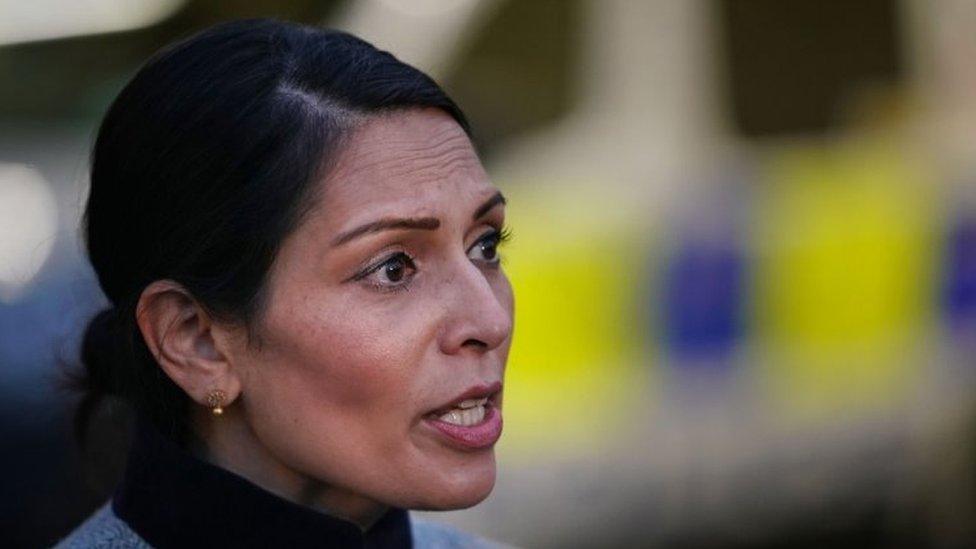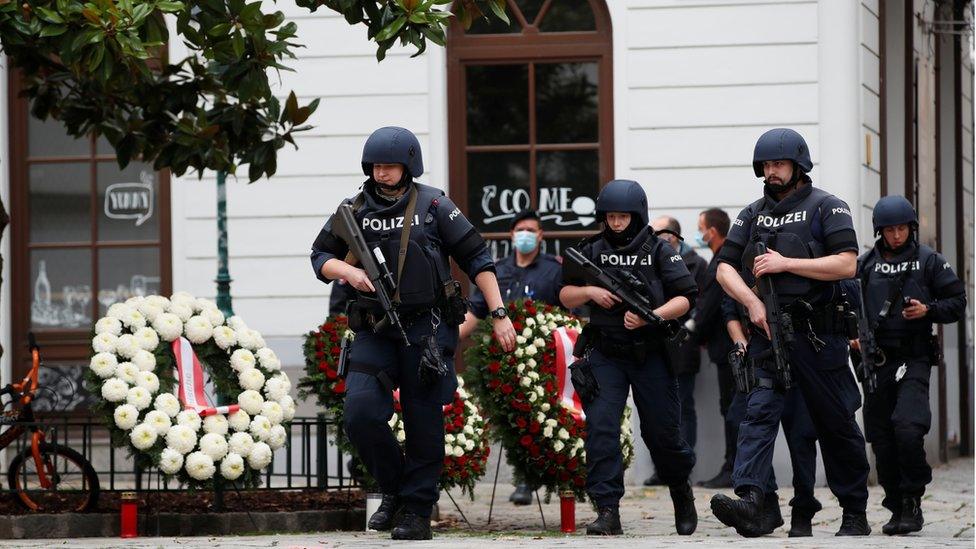UK terrorism threat level lowered to 'substantial'
- Published

The UK's terrorism threat level has been downgraded from "severe" to "substantial".
Home Secretary Priti Patel said the move followed a "significant reduction" in the momentum of attacks in Europe - since those seen in Austria and France between September and November 2020.
But she stressed that it was kept under constant review and was always subject to change.
A "substantial" threat level means a terrorist attack is still likely.
The threat level was raised to severe by the Joint Terrorism Analysis Centre (JTAC) in November following the attacks last year, which saw four people shot dead in Vienna, three others die in a knife attack in Nice, and a teacher murdered in Paris.
But on Thursday last week the expert analysts reduced the level, Ms Patel told MPs on Monday.
She added: "Terrorism remains one of the most direct and immediate risks to our national security.
"Substantial continues to indicate a high level of threat; and an attack on the UK is still likely.
"The public should continue to remain vigilant and report any concerns to the police."

'Intent remains'

The UK's threat level system doesn't come with the publication of the number of ongoing plots - and indicators of foiled attacks and near-misses.
But the headline declaring there is now a "substantial" threat can be understood with the help of some historical context.
When the level was raised last year, there was no specific new intelligence suggesting a major bomb plot was about to come to fruition.
But security agencies know, from the words of attackers themselves, that events at home are often inspired by those far away.
Chronic global crises, such as Syria, provide radicalisers with raw material they can use to recruit and incite hate. Single specific incidents - such as the deaths in Vienna last November - can influence other extremists to accelerate their own plans - the copycat effect.
But for months now, the pace of global events that are used as excuses for terrorism has slowed.
There's some intelligence that some extremists in the UK also briefly slowed down as the pandemic and lockdowns took hold.
That has not lasted. The number of potential suspects on MI5's radar remains largely unchanged at around 3,000 people.
So the intent remains - including from the extreme right wing.

The JTAC makes its recommendations independently from the government.
Low - an attack is highly unlikely
Moderate - an attack is possible but not likely
Substantial - an attack is likely
Severe - an attack is highly likely
Critical - an attack is highly likely in the near future
The UK's terrorism threat level was last raised to the highest rating, "critical", in the days following the Manchester Arena bombing in May 2017.
It reached that level again briefly in September that year, after a bomb partially exploded on a Tube train at Parsons Green.
The threat level remained at the second highest rating, "severe", until November 2019 when it was downgraded to "substantial", where it stayed until last November.
Related topics
- Published3 November 2020

- Published3 November 2020

- Published29 October 2020

- Published20 October 2020
